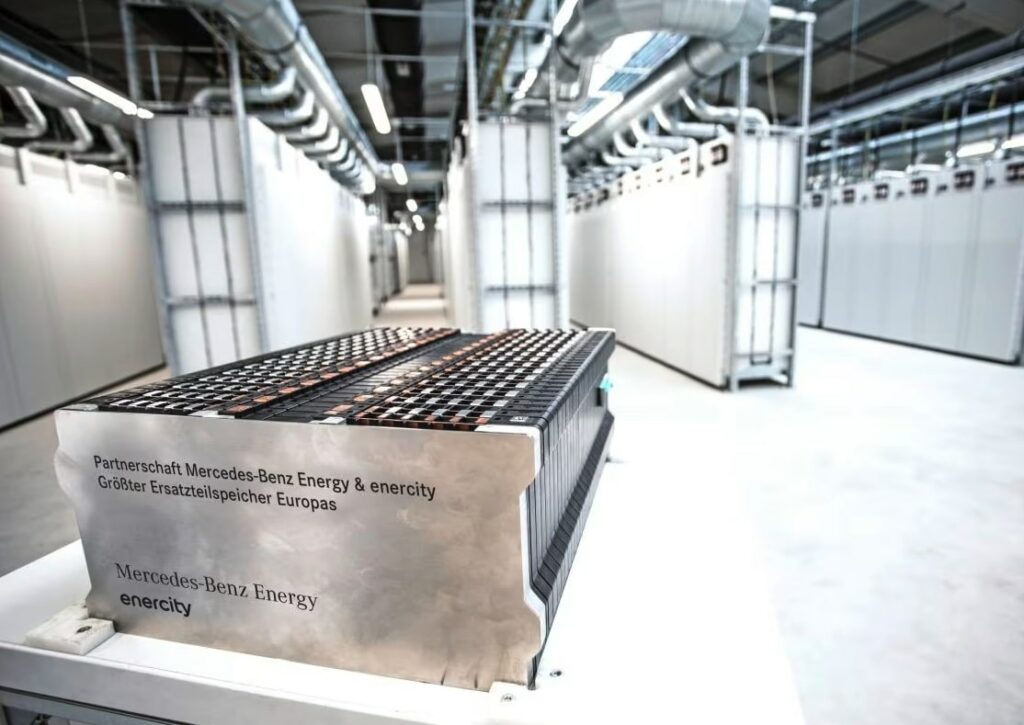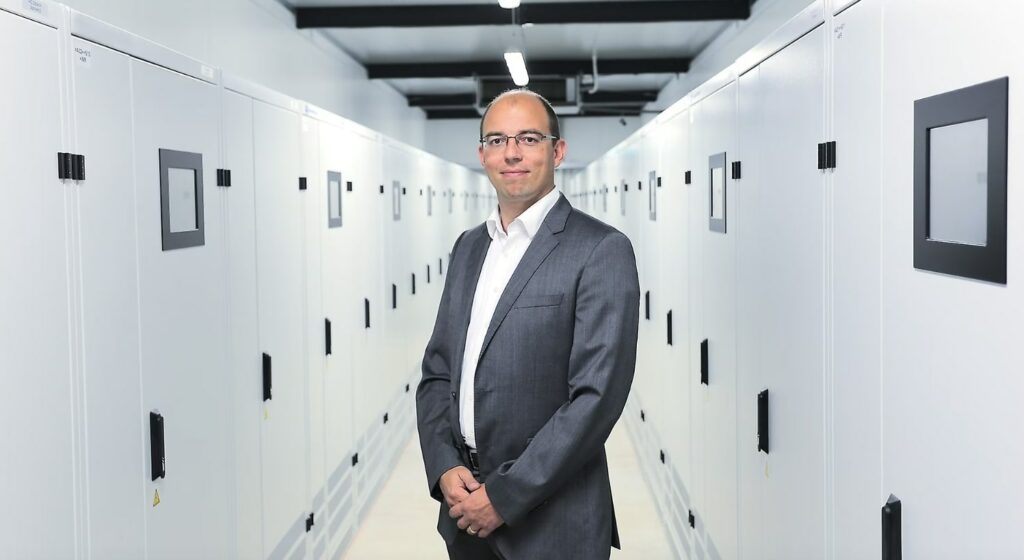
The second life energy storage market is about to enter a consolidation phase after a period of proliferating startups, the CEO of Mercedes-Benz Energy tells Energy-Storage.news in a wide-ranging interview.
The second life energy storage market has been covered extensively by Energy-Storage.news over the past six months. The value proposition of repurposing used EV batteries into stationary energy storage systems (ESS) is clear and the volumes hitting the market are growing substantially, although questions remain over the technology’s viability at scale.
Enjoy 12 months of exclusive analysis
- Regular insight and analysis of the industry’s biggest developments
- In-depth interviews with the industry’s leading figures
- Annual digital subscription to the PV Tech Power journal
- Discounts on Solar Media’s portfolio of events, in-person and virtual
Or continue reading this article for free
Automotive OEM Mercedes-Benz entered entered the stationary energy storage market in 2016, marketing a range of primarily residential solutions in Europe and the US, but that fizzled out as CEO Gordon Gassmann explains.
“We have tried a few approaches since 2016 and the core of our business has always been focused on second life batteries. But we were aware that EV penetration would take some time.”
“One of those approaches was entering the home energy storage applications market, which was an interesting avenue at that time. We came to a situation where we had to decide where to put our battery production resources and decided to focus on car battery production and quit the home storage market and focus on our core business.”
The company said in 2018 that there “was no economic benefit to basing home energy storage on EV batteries” as reported by Energy-Storage.news at the time.
Few would argue against that decision considering the EV boom of the last few years. To a lesser extent, a UK government-funded report recently declaring that some stakeholders believe second life battery modules can never be safe enough for home applications also points to that being a wise decision.
Mercedes-Benz Energy today focuses on reusing battery material from its parent company’s vehicles and designing energy storage systems using those batteries. Its ESS products are not available in every market but, being Mercedes-Benz, its battery modules are and the firm has been striking partnerships with specialist second life storage startups across the globe, most recently in India.
“We are building a network of partners with whom we do the qualification process for our batteries or modules in order to have those adopted into energy storage in each region. These partners have access to special markets and niche applications,” Gassmann says.
“We focus on getting the batteries, doing the analysis, getting the certifications, essentially doing all the groundwork. It’s good to then have partners for the actual application and operation side.”
Asked if Mercedes-Benz Energy had plans to acquire any of these companies, the answer is a categorical ‘no’. However, the CEO still expects the market to consolidate, but through the biggest players leveraging their positions rather than M&A activity.
“The days when small second life startups are popping up is still happening but it’s becoming less so. We’re about to go into a consolidation phase where the established players begin to scale,” Gassmann says.
“Most of the second life market is still dominated by the automotive OEMs, as was the case when it started, due to the obviously biggest input flow into the market.”
He doesn’t give us exact figures on what sort of scale the company has reached with the modules it has to deploy, but does give a rough idea.
“When we first started we were happy to reutilise just a few batteries. In 2016 we did 20-30 MWh which is just a small piece of our business today. I can’t give exact numbers but I can say that, while we are still counting in megawatt-hours (MWh), it won’t be the case for too long. We are on the edge of gigawatt-hours (GWh) per year.”
As Energy-Storage.news has written, most of today’s volumes in the second life space are from the factory floor rather than true second life ones which have been on the road for a sustained period of time. Like other second life energy storage companies Mercedes-Benz Energy uses both.
“We believe every piece of battery should be treated at the highest possible level of value, which means looking for any possible way to use it or parts of it as long as possible before it is recycled.”
A big theme in the second life energy storage market is the need for highly sophisticated battery management system (BMS) platform to scale the technology. Because of the variety of battery modules comprising the available supply, BMS platforms that can take into account a range of states of health, capacities and resistances are needed to safely manage and optimise a heterogenous ESS unit.
Recent interviewee Anthony Stratakos, CEO of California-based Element Energy, claimed several differentiating features for its BMS including the above as well as more advanced diagnostics in-the-field. Whilst not comparing the two, Gassmann said Mercedes-Benz Energy’s own proprietary BMS is also highly differentiated.
“We have one of the most sophisticated BMS platforms oin the market. It has a lot of patents. The demand for the supply of our system to other market players is quite high.”
What’s more, he claimed that by their very nature second life energy storage firms are more prepared for the full lifecycle of energy storage technology.
“In the energy storage business long-term performance is essential. What is important to understand is that a first life energy storage system in three to five years will be like a second life energy storage system deployed today. We are putting a lot of focus on all the stuff that is needed for that. And remember, cost-wise there is a difference if you only focus on a few years instead of focusing on year 12 to 15 of the system as we do.”
Major (relatively for the second life space ) projects the company has deployed include a 17MWh system in Hanover in partnership with utility enercity and a 13MWh system in Lünen, optimised by V2G specialist The Mobility House – both in Germany.

